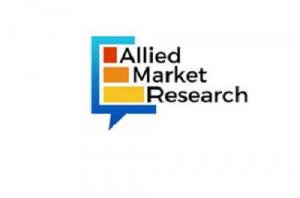Hydrogen Generation Market to Hit $262B by 2031 Amid Clean Energy Boom (CAGR 6.8%)
Scaling clean hydrogen requires not just technology but predictable policy, financing and real industrial demand — otherwise projects stay on paper.
WILMINGTON, DE, UNITED STATES, September 15, 2025 /EINPresswire.com/ -- According to a new report published by Allied Market Research, titled, “Hydrogen Generation Market Size, Share, Competitive Landscape and Trend Analysis Report, by Source (Blue Hydrogen, Gray Hydrogen, Green Hydrogen), by Process (Steam Methane Reforming, Coal Gasification, Electrolysis, Others), by Delivery Mode (Captive, Merchant), by Application (Chemical Processing, Transportation, Petroleum Recovery, Power Generation, Others): Global Opportunity Analysis and Industry Forecast, 2021 - 2031" The global hydrogen generation market size was valued at $136.3 billion in 2021, and hydrogen generation industry is projected to reach $262.0 billion by 2031, growing at a CAGR of 6.8% from 2022 to 2031.Global hydrogen demand reached about 97 million tonnes in 2023, remaining concentrated in refining and chemicals while production is still dominated by unabated fossil-fuel routes; interest in low-emissions hydrogen (green and blue) is rising but commercial scale-up faces cost, policy and infrastructure gaps.
𝗗𝗼𝘄𝗻𝗹𝗼𝗮𝗱 𝗣𝗗𝗙 𝗕𝗿𝗼𝗰𝗵𝘂𝗿𝗲: https://www.alliedmarketresearch.com/request-sample/A01250
𝗠𝗮𝗿𝗸𝗲𝘁 𝗗𝘆𝗻𝗮𝗺𝗶𝗰𝘀
• Supply mix and incumbent dominance. Today the vast majority of hydrogen is produced from natural gas and coal (steam-methane reforming and gasification) with little carbon capture — low-emissions hydrogen comprised only a tiny share in 2023 — so transition dynamics are driven as much by incumbent fuel economics as by climate policy.
• Electrolyser scale-up and manufacturing concentration. Rapid announcements of electrolyser projects have created an expectation of exponential green-H₂ growth, but installed electrolyser capacity was still small at the start of the decade and manufacturing is concentrated (notably in China), creating both supply-chain risk and short-term bottlenecks for cost reduction and deployment.
• Policy, financing and the ‘cost gap’. The market is extremely sensitive to policy support (subsidies, offtake guarantees, hydrogen-track infrastructure and carbon pricing). Without predictable demand signals and financing instruments, many announced projects remain at early stages — creating boom/bust risk and slowing private investment.
• Demand pull — industrial and transport niches first. Practical early markets are industrial heat, ammonia/fertilizer feedstock, oil refining, and select transport/transport-adjacent uses (heavy trucks, certain shipping routes, rail and forklifts). These sectors are prioritized because switching is feasible and volumes are large enough to justify early industrial projects.
• Technology & cost trajectory. Over the medium term, projected cost reductions in renewables and electrolysers — coupled with advances in CCS for blue hydrogen — could shrink the cost gap. However, project cancellations, higher-than-expected capex and uncertain renewable-power availability mean that timelines for broad economic parity remain uneven across regions.
𝗦𝗻𝗮𝗴 𝗗𝗶𝘀𝗰𝗼𝘂𝗻𝘁: https://www.alliedmarketresearch.com/checkout-final/A01250
𝗦𝗲𝗴𝗺𝗲𝗻𝘁 𝗢𝘃𝗲𝗿𝘃𝗶𝗲𝘄
The hydrogen generation market analysis is segmented by production pathway (grey SMR from natural gas, blue hydrogen with CCS, green hydrogen via electrolysis using renewable power), by technology (alkaline, PEM, SOEC electrolysers; SMR/ATR/coal gasification for fossil routes), and by end-use (refining, chemicals/ammonia, industrial heat, power/energy storage, transport), with each segment following different adoption curves due to cost, regulation and proximity to existing infrastructure.
𝗥𝗲𝗴𝗶𝗼𝗻𝗮𝗹 𝗔𝗻𝗮𝗹𝘆𝘀𝗶𝘀
Advanced economies (Europe, North America, Japan, Korea). These regions lead on policy frameworks, pilot hubs, and supportive financing (grants, contracts for difference) and are prioritizing green hydrogen for hard-to-abate industry and mobility. Europe’s regulatory push and hub planning, and U.S. incentives, are accelerating demonstrations and infrastructure build-outs, but high domestic gas prices and permitting delays remain constraints.
Asia Pacific & emerging markets. China dominates electrolyser manufacturing and a large share of announced capacity; however project realization varies. Resource-rich markets (parts of Middle East, Australia, Latin America) are positioning for export-oriented green hydrogen and ammonia, while many emerging markets still rely on conventional hydrogen for refining and chemicals. Policy clarity, grid access to renewables and export logistics will determine which countries become competitive exporters.
𝗙𝗼𝗿 𝗣𝘂𝗿𝗰𝗵𝗮𝘀𝗲 𝗜𝗻𝗾𝘂𝗶𝗿𝘆:
https://www.alliedmarketresearch.com/purchase-enquiry/A01250
𝗖𝗼𝗺𝗽𝗲𝘁𝗶𝘁𝗶𝘃𝗲 𝗔𝗻𝗮𝗹𝘆𝘀𝗶𝘀
Established gas & industrial-gas players vs. electrolyser specialists. Large industrial-gas and engineering companies (global majors) leverage scale, customer relationships and project execution capability to capture blue and large-scale projects, while dedicated electrolyser and stack manufacturers (and specialist system integrators) compete on modularity, efficiency and stack cost per kW. Market leaders include major industrial gas companies plus recognized electrolyser and systems vendors.
Differentiation & consolidation. Competitive advantage will come from integrated project delivery (sourcing renewables, electrolyser supply, storage, offtake contracts), access to low-cost finance and proven electrolyser reliability. Expect ongoing M&A, strategic partnerships (energy majors with electrolyser makers, utilities with industrial offtakers) and selective consolidation as the market moves from announcements to FIDs and construction.
𝗞𝗲𝘆 𝗙𝗶𝗻𝗱𝗶𝗻𝗴𝘀 𝗼𝗳 𝘁𝗵𝗲 𝗦𝘁𝘂𝗱𝘆
• Global hydrogen demand is large today (~97 Mt in 2023) but is overwhelmingly met by unabated fossil routes.
• Green hydrogen growth is contingent on rapid electrolyser scale-up and cheaper renewable electricity; supply-chain concentration is a near-term risk.
• Policy certainty, financing mechanisms and demand-side signals are the decisive levers to convert announced pipelines into operating capacity.
• Early commercial demand will come from industrial sectors (ammonia, refining, steel feedstock) and selected transport niches not mass passenger vehicles.
• Market structure will reward vertically integrated players and consortiums that can bundle renewables, electrolyser supply and long-term offtakes; expect M&A and partnerships.
𝗧𝗿𝗲𝗻𝗱𝗶𝗻𝗴 𝗥𝗲𝗽𝗼𝗿𝘁𝘀 𝗶𝗻 𝗜𝗻𝗱𝘂𝘀𝘁𝗿𝘆:
Liquid Hydrogen Micro Bulking Systems Market
https://www.alliedmarketresearch.com/global-liquid-hydrogen-micro-bulking-systems-market-A325779
Green Hydrogen Market
https://www.alliedmarketresearch.com/green-hydrogen-market-A11310
Hydrogen Storage Market
https://www.alliedmarketresearch.com/hydrogen-storage-market-A122780
Hydrogen Infrastructure Market
https://www.alliedmarketresearch.com/hydrogen-infrastructure-market-A165713
Grey Hydrogen Market
https://www.alliedmarketresearch.com/grey-hydrogen-market-A74587
Hydrogen Generation Market
https://www.alliedmarketresearch.com/hydrogen-generation-market
Hydrogen Energy Storage Market
https://www.alliedmarketresearch.com/hydrogen-energy-storage-market-A10578
Hydrogenerators Market
https://www.alliedmarketresearch.com/hydrogenerators-market-A09302
David Correa
Allied Market Research
+15038946022 ext.
email us here
Visit us on social media:
LinkedIn
Facebook
YouTube
X
Legal Disclaimer:
EIN Presswire provides this news content "as is" without warranty of any kind. We do not accept any responsibility or liability for the accuracy, content, images, videos, licenses, completeness, legality, or reliability of the information contained in this article. If you have any complaints or copyright issues related to this article, kindly contact the author above.

